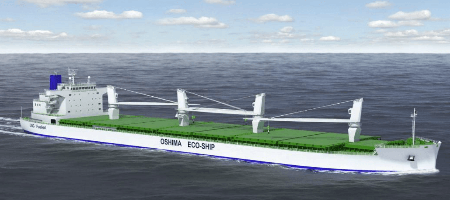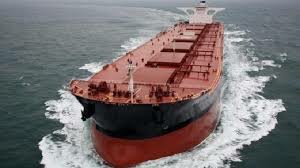
Fig: Self unloader components in operation
ii) a hybrid self-unloader: commonly used, this method does not require any special structural design of the vessel. The cargo is discharged by grabs into hoppers where it feeds onto a conveyor belt. The hoppers can be permanently fitted on the ship or may be placed on the deck of the vessel when discharging.
These ships can discharge cargo in ports without any unloading facilities. The discharging rates achieved can be the same or higher than those of similar shore based facilities. An added advantage is that a totally enclosed conveyor system can discharge cargoes such as cement, coal, grain, ores and fertilisers without causing problems such as dust, cargo wastage, or damage to the ship's structure by grabs or weather effects.
While the initial cost may be high and the ship's carrying capacity is reduced by fitting an unloader, this is offset by the quick turn around and reduced port stay.
Read more on self-unloaders various components and handling guide....

Open hatch bulk carrier : Courtesy OSHIMA eco-ship





